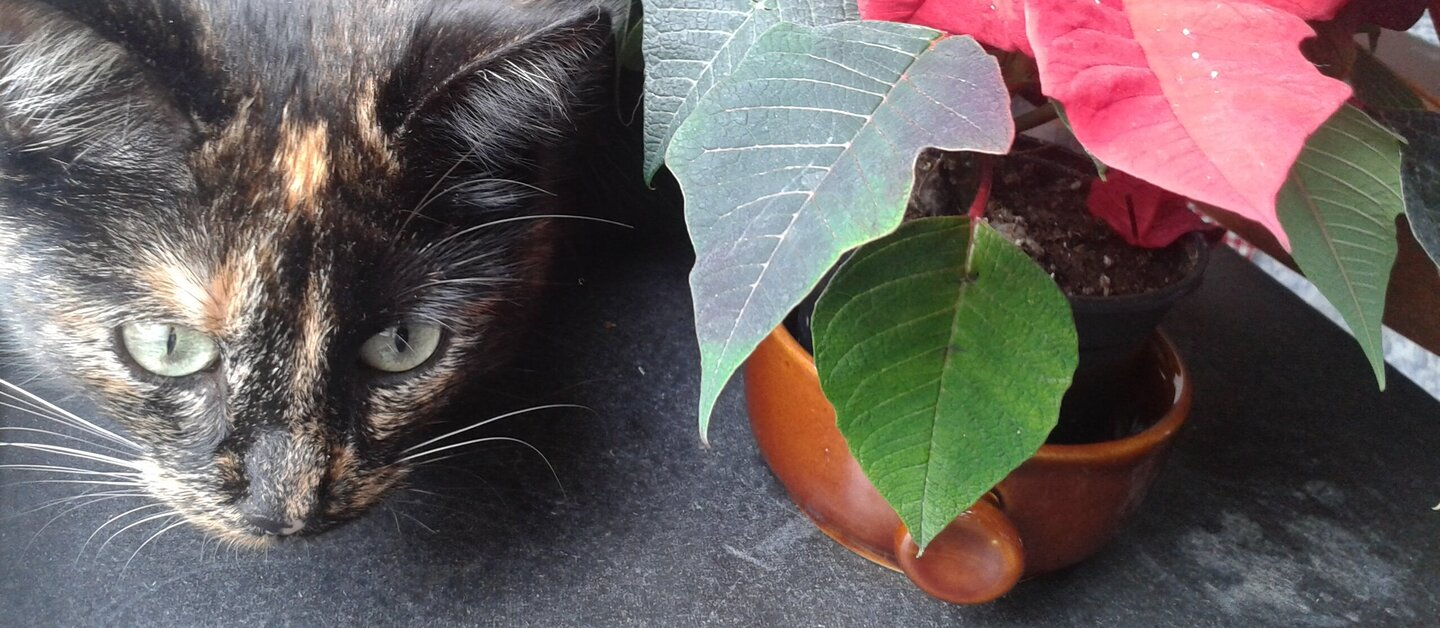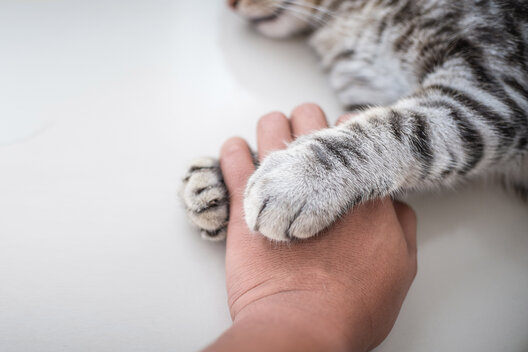Toxic plants & substances for cats, dogs & co.This is poisonous for pets
Pet owners often attribute non-specific illnesses in their pets to poisoning. Often, however, this assumption cannot be confirmed by the vet. However, at least the majority of animal patients at a veterinary practice fall ill or die as a result of poisoning. Nevertheless, pet owners should be vigilant and avoid potential sources of danger.
The quantity makes the poison! Depending on the amount ingested and the size/body weight or state of health of the animal, toxic substances can sometimes only trigger mild symptoms, but can also be life-threatening. It is therefore advisable to contact a vet if you observe ingestion of the following substances
Chemical poisons for petsList is only a selection, no claim to completeness
Symptoms: ataxia/swaying, cramps, sometimes heavy salivation, low temperature
Symptoms: vomiting, increased water intake, increased urine output, drowsiness, staggering, staggering and even coma
Note: Even small amounts can be life-threatening.
Symptoms: bloody diarrhea, vomiting.
Note: The medication box and package leaflet should be shown to the vet!
Symptoms: Bleeding (e.g. nosebleeds), bruising, mucosal bleeding, injuries do not stop bleeding, animals stagger, bloody feces or urine possible, increasing weakness, pale mucous membranes, convulsions, up to sudden death
Note:
- Depending on the preparation, symptoms may not appear until days after ingestion.
- The toxins are mostly anticoagulants.
Symptoms: increased salivation, vomiting, deep mucosal detachment (ulcers) in the oral cavity, fever, severe skin irritation
Note:
- Almost all household cleaners and disinfectants can cause reactions (skin irritations, possibly allergies) in humans and animals when ingested.
- We recommend that all pet owners use household disinfectants and cleaning agents very sparingly.
- After using household cleaners, the floor and all objects with which the pet may come into contact should always be rinsed with clean water.
- The active ingredient benzalkonium chloride , which is contained in many household cleaners, is particularly toxicto cats. If cats lick these cleaning agents or come into contact with the skin, the above-mentioned symptoms may occur.
Symptoms: panting, restlessness, diarrhea, vomiting, cardiac arrhythmia
Note: Poisoning is triggered by the intake of large quantities of coffee, (dark) chocolate or tea (heart-active ingredients).
Symptoms: weakness, tremors, vomiting, lateral position, coma, seizures
Notice:
- Even the intake of small amounts can lead to hypoglycemia of the body.
- Quantities of 0.5g/kg or more can cause acute liver failure and blood clotting disorders.
Herbal poisons for petsList is only a selection, no claim to completeness
The listed garden, wild and house plants are poisonous to dogs, cats, rabbits, birds and rodents such as guinea pigs and hamsters (not exhaustive). Some of the garden and wild plants are also poisonous to horses. Go to the vet immediately if you suspect that your pet has eaten something poisonous.
Poisonous garden and wild plants
Adonis species contain cardiac glycosides and their effect is very similar to that of the red foxglove.
Symptoms: Drowsiness, staggering, nausea, vomiting, cramps, diarrhea (possibly bloody), also possible cardiac arrhythmia, shortness of breath, cardiac arrest if the poisoning is severe enough. As little as 0.02 g of the poison leads to vomiting and diarrhea.
Symptoms: Stomach and intestinal inflammation, increased salivation, cramps. In the end, paralysis occurs and death can be caused by respiratory paralysis.
Symptoms: vomiting, salivation, diarrhea, colic, inflammation of the mucous membranes, depression, cardiac arrest in cases of severe poisoning.
Symptoms: vomiting, diarrhea, hyperexcitability, cramps; paralysis, even death due to respiratory paralysis in cases of severe poisoning. For horses, 750 g of boxwood leaves are fatal.
Symptoms: vomiting, diarrhea, colic, nervous excitement and paralysis.
The leaves, berries, stems and sap of ivy are poisonous to animals, especially the very bitter-tasting fruits. The main toxins are the saponins α- and β-hederin, which irritate the mucous membranes.
Symptoms: Diarrhea, vomiting, agitation and cramps.
The needles and seeds contain the heart-active alkaloid taxine, the red seed coat is non-toxic.
Symptoms: vomiting, diarrhea, dizziness, abdominal pain, pupil dilation, eventually unconsciousness, blood pressure drops, death often occurs after 1 1/2 hours due to cardiac arrest.
Symptoms: vomiting, diarrhea, cramps, restlessness, cardiac arrhythmia, respiratory paralysis. The lethal dose in horses is 300 - 400 g of the fresh root, in dogs 5 g of the dried root.
Poisoning may occur in horses if the soybean meal fed contains more than 0.3 % datura seeds.
Symptoms: vomiting, diarrhea, cardiac arrhythmia
Symptoms: vomiting, bloody diarrhea, drowsiness, staggering, cardiac arrhythmia, cardiac arrest if the poisoning is severe enough. The lethal dose for horses is 25 g of dried leaves and 100 - 200 g of fresh leaves; for dogs, however, 5 g is already lethal.
Symptoms: Nausea, increased salivation, vomiting, diarrhea, restlessness, agitation, paralysis, constipation up to intestinal obstruction, unconsciousness. Pregnant mares may go into labor.
Symptoms: sweating in horses, vomiting, cramps and paralysis; death can also occur after 1 hour.
Symptoms: refusal to eat, vomiting, salivation, sweating, colic, bloody diarrhea, circulatory disorders, paralysis. Death occurs after 1 - 3 days due to respiratory paralysis if the poisoning is severe enough.
Symptoms: salivation, irritation of the mucous membranes, stomach and intestinal disorders, agitation, breathing problems; severe poisoning can lead to respiratory paralysis.
Most of the toxins are found in the bulb.
Symptoms: salivation, vomiting, diarrhea (possibly bloody), loss of appetite, seizures, organ damage, respiratory arrest
Symptoms: refusal to eat, gastrointestinal complaints, vomiting, salivation, sweating, colic and bloody diarrhea, circulatory disorders, paralysis. Death occurs after 1 - 3 days due to respiratory paralysis if the poisoning is severe enough.
Symptoms: Cardiac arrhythmia, stomach and intestinal complaints with diarrhea, listlessness, cramps.
Symptoms: Cardiac arrhythmia, pupil dilation, drop in body temperature, associated chilly legs and gastrointestinal complaints with diarrhea.
Symptoms: Stomach and intestinal inflammation, increased salivation, cramps, eventually paralysis, death can occur due to respiratory paralysis. Tortoises can die after 24 hours by ingesting just one flower or a few leaves.
The bulb contains poisonous alkaloids and is the most poisonous part of the plant. Leaves, stems and flowers contain components that are toxic to animals.
Symptoms: increased salivation, salivation, vomiting, diarrhea, drowsiness, constricted pupils, seizures
Symptoms: vomiting, diarrhea, cardiac arrhythmia. Poisoning may occur in horses if the soybean meal fed contains more than 0.3 % datura seeds.
Also known as holly. Holly is often used for Christmas decorations. The fruits and leaves in particular contain various alkaloids.
Symptoms: Smacking, salivation, vomiting and diarrhea.
Tulip bulbs in particular are poisonous to animals. The lactones and alkaloids they contain irritate the animal's mucous membranes.
Symptoms: salivation, vomiting, diarrhea
The toxins have a phototoxic effect on the animals and thus cause poisoning in connection with sun exposure.
Symptoms: Skin rashes, blockage of the excretion of bile pigments, resulting in yellowing of the mucous membranes, jaundice and liver damage, animals suffer from bloody diarrhea or constipation, movement disorders and sensitivity to light
The plants retain their poisonous effect even when dried. Fresh plants are usually avoided by animals due to their pungent taste, but not so in hay.
Symptoms: severe irritation of the mucous membranes, gastrointestinal complaints with cramps and often bloody diarrhea, drop in body temperature, paralysis, bloody urine and feces, staggering, liver damage and cardiac arrhythmia.
Poisonous houseplants
Symptoms: Nausea, vomiting, sweating, severe stomach discomfort with diarrhea, circulatory disorders, respiratory paralysis in fatal doses.
Symptoms: Nausea, vomiting, profuse sweating, increased salivation, drowsiness, diarrhea. Also possible: damage to the kidneys, paralysis, cardiac arrhythmia and skin irritation due to contact with the plant.
Symptoms: vomiting, diarrhea, possibly bloody (with tuberous begonia).
Symptoms: irritation of the stomach lining, stomach problems and colic. If the animals' eyes come into contact with the milky juice, this can lead to temporary blindness.
Dieffenbachia can be dangerous, even fatal, for our pets.
Symptoms: severe irritation of the mouth, irritation of the stomach, intestines and throat, difficulty swallowing, difficulty breathing, loss of voice; bloody diarrhea may also occur. Birds have died after nibbling on the Dieffenbachia.
Symptoms: salivation, vomiting, diarrhea, difficulty swallowing.
Symptoms: vomiting, diarrhea, stomach and intestinal complaints.
Symptoms: refusal to eat, gastrointestinal complaints, vomiting, salivation, sweating, colic and bloody diarrhea, circulatory disorders, paralysis. If the poisoning is severe enough, death occurs after 1 - 3 days due to respiratory paralysis.
Other lily species can also be poisonous.
Symptoms: severe irritation of the mucous membranes, gastrointestinal problems with cramps and often bloody diarrhea, drop in body temperature, paralysis, bloody urine and feces, staggering, liver damage and cardiac arrhythmia. In smaller animals, death due to poinsettia poisoning cannot be ruled out.
Checklist: What to do if your pet is poisoned?
- Seek veterinary advice immediately: Both if poisoning is suspected or if poison ingestion has actually been observed. If the animal is unconscious, it is in mortal danger and must be taken immediately to the nearest small animal vet or to a nearby veterinary clinic.
- Have the following information ready for the vet: bring the suspected source of poison (if possible also the packaging, possibly package insert) to the practice, product description of the poison, time of poison ingestion, amount of poison ingested, route of poison ingestion (orally, via the skin, inhaled), material eaten or vomited (packed in a plastic bag)
- If necessary, carry out first life support measures:
- Keep airways clear: Remove mucus and vomit from the mouth, expose the tongue
- In case of convulsions: Calm the animal and remove objects that could injure it (observe self-protection!).
- In the event of respiratory arrest: give chest compressions (position the animal on its side and compress the left chest wall rhythmically)
- He can try to wash the animal's fur, skin, mucous membranes and eyes with lukewarm tap water (use gloves!). Dry powder can be removed with a vacuum cleaner.
- Please do not: The pet owner should not induce vomiting, as the animal could choke. He should also not try to give the animal milk, protein or vegetable oils.
Additional measures by the owner only make sense if he knows exactly which toxins his pet has ingested. The advice of a vet should always be sought first!
Further helpful information for the vet
- What was fed / eaten?
- Did the sick animal have access to poisonous plants?
- Has the animal had access to insecticides, rodenticides, herbicides or has pest or weed control been carried out in the area where it lives or in the immediate vicinity?
- Has it recently undergone ecto- or endoparasite treatment?
- Has any medication been administered?
- Has anything been changed in the animal's environment (building work in the house or garden, new furnishings, new accessories, e.g. dog blanket)?
Poison control centers and poison information centers in Germany
There are eight poison information centers (GIZ) in Germany that provide emergency medical advice on poisoning. Unfortunately, there are no purely veterinary poison control centers or poison information centers, but the staff at the aforementioned human medical centers can also assess the risk of poisoning in animals in some cases and advise pet owners accordingly. For veterinarians, the Swiss website of CliniPharm/CliniTox also offers a lot of helpful information.
Berliner Betrieb für Zentrale gesundheitliche AufgabenInstitut für Toxikologie-Klinische Toxikologie und Giftnotruf Berlin
Phone: 030/19240
Oranienburger Straße 285
13437 Berlin
Center for Pediatrics, University Hospital Bonn
Phone: 0228/19240 and 0228/28733211
Adenauerallee 119
53113 Bonn
Joint Poison Information Center of the states of Mecklenburg-Western Pomerania, Saxony, Saxony-Anhalt and Thuringia, c/o HELIOS Klinikum Erfurt
Phone: 0361/730730
Nordhäuser Straße 74
99089 Erfurt
Phone: 0761/19240
Hugstetter Strasse 49
79106 Freiburg
Georg-August-Universität - Department of Human Medicine, advice from a team of doctors from the fields of internal medicine, occupational medicine, psychiatry/addiction research, pharmacology/toxicology, public health, supported by two chemists
Phone: 0551/19240
Robert-Koch-Straße 40
37075 Göttingen
University Clinic for Pediatrics and Adolescent Medicine, Building 9
Phone: 06841/19240
Kirrberger Straße
66421 Homburg/Saar
Johannes Gutenberg University, II Medical Clinic and Polyclinic, Clinical Toxicology
Telephone: 06131/19240 and 06131/232466
Langenbeckstraße 1
55131 Mainz
Rechts der Isar Medical Clinic of the Technical University of Munich
Phone: 089/19240
Ismaninger Straße 22
81675 Munich




